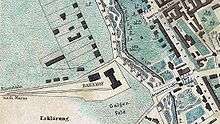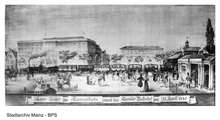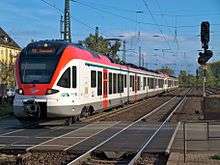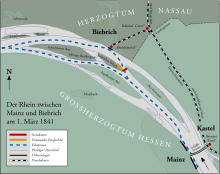Taunus Railway
| Taunus Railway | ||||||||||||||||||||||||||||||||||||||||||||||||||||||||||||||||||||||||||||||||||||||||||||||||||||||||||||||||||||||||||||||||||||||||||||||||||||||||||||||||||||||||||||||||||||||||||||||||||||||||||||||||||||||||||||||||||||||||||||||||||||||||||||||||||||||||||||||||||||||||||||||||||||||||||||||||||||||||||||||||||||||||||||||||||||||||||||||||||||||||||||||||||||||||||||||||||||||||||||||||||||||||||||||||||||||||||||||||||||||||
|---|---|---|---|---|---|---|---|---|---|---|---|---|---|---|---|---|---|---|---|---|---|---|---|---|---|---|---|---|---|---|---|---|---|---|---|---|---|---|---|---|---|---|---|---|---|---|---|---|---|---|---|---|---|---|---|---|---|---|---|---|---|---|---|---|---|---|---|---|---|---|---|---|---|---|---|---|---|---|---|---|---|---|---|---|---|---|---|---|---|---|---|---|---|---|---|---|---|---|---|---|---|---|---|---|---|---|---|---|---|---|---|---|---|---|---|---|---|---|---|---|---|---|---|---|---|---|---|---|---|---|---|---|---|---|---|---|---|---|---|---|---|---|---|---|---|---|---|---|---|---|---|---|---|---|---|---|---|---|---|---|---|---|---|---|---|---|---|---|---|---|---|---|---|---|---|---|---|---|---|---|---|---|---|---|---|---|---|---|---|---|---|---|---|---|---|---|---|---|---|---|---|---|---|---|---|---|---|---|---|---|---|---|---|---|---|---|---|---|---|---|---|---|---|---|---|---|---|---|---|---|---|---|---|---|---|---|---|---|---|---|---|---|---|---|---|---|---|---|---|---|---|---|---|---|---|---|---|---|---|---|---|---|---|---|---|---|---|---|---|---|---|---|---|---|---|---|---|---|---|---|---|---|---|---|---|---|---|---|---|---|---|---|---|---|---|---|---|---|---|---|---|---|---|---|---|---|---|---|---|---|---|---|---|---|---|---|---|---|---|---|---|---|---|---|---|---|---|---|---|---|---|---|---|---|---|---|---|---|---|---|---|---|---|---|---|---|---|---|---|---|---|---|---|---|---|---|---|---|---|---|---|---|---|---|---|---|---|---|---|---|---|---|---|---|---|---|---|---|---|---|---|---|---|---|---|---|---|---|---|---|---|---|---|---|---|---|---|---|---|---|---|---|---|---|---|---|---|---|---|---|---|---|---|---|---|---|---|---|---|---|---|---|---|---|---|---|---|---|---|---|---|---|---|---|---|---|---|---|---|---|
|
Former Taunus station in Frankfurt | ||||||||||||||||||||||||||||||||||||||||||||||||||||||||||||||||||||||||||||||||||||||||||||||||||||||||||||||||||||||||||||||||||||||||||||||||||||||||||||||||||||||||||||||||||||||||||||||||||||||||||||||||||||||||||||||||||||||||||||||||||||||||||||||||||||||||||||||||||||||||||||||||||||||||||||||||||||||||||||||||||||||||||||||||||||||||||||||||||||||||||||||||||||||||||||||||||||||||||||||||||||||||||||||||||||||||||||||||||||||||
| Overview | ||||||||||||||||||||||||||||||||||||||||||||||||||||||||||||||||||||||||||||||||||||||||||||||||||||||||||||||||||||||||||||||||||||||||||||||||||||||||||||||||||||||||||||||||||||||||||||||||||||||||||||||||||||||||||||||||||||||||||||||||||||||||||||||||||||||||||||||||||||||||||||||||||||||||||||||||||||||||||||||||||||||||||||||||||||||||||||||||||||||||||||||||||||||||||||||||||||||||||||||||||||||||||||||||||||||||||||||||||||||||
| Native name | Taunus-Eisenbahn | |||||||||||||||||||||||||||||||||||||||||||||||||||||||||||||||||||||||||||||||||||||||||||||||||||||||||||||||||||||||||||||||||||||||||||||||||||||||||||||||||||||||||||||||||||||||||||||||||||||||||||||||||||||||||||||||||||||||||||||||||||||||||||||||||||||||||||||||||||||||||||||||||||||||||||||||||||||||||||||||||||||||||||||||||||||||||||||||||||||||||||||||||||||||||||||||||||||||||||||||||||||||||||||||||||||||||||||||||||||||
| Locale | Hesse | |||||||||||||||||||||||||||||||||||||||||||||||||||||||||||||||||||||||||||||||||||||||||||||||||||||||||||||||||||||||||||||||||||||||||||||||||||||||||||||||||||||||||||||||||||||||||||||||||||||||||||||||||||||||||||||||||||||||||||||||||||||||||||||||||||||||||||||||||||||||||||||||||||||||||||||||||||||||||||||||||||||||||||||||||||||||||||||||||||||||||||||||||||||||||||||||||||||||||||||||||||||||||||||||||||||||||||||||||||||||
| Line number | 3603/3610 | |||||||||||||||||||||||||||||||||||||||||||||||||||||||||||||||||||||||||||||||||||||||||||||||||||||||||||||||||||||||||||||||||||||||||||||||||||||||||||||||||||||||||||||||||||||||||||||||||||||||||||||||||||||||||||||||||||||||||||||||||||||||||||||||||||||||||||||||||||||||||||||||||||||||||||||||||||||||||||||||||||||||||||||||||||||||||||||||||||||||||||||||||||||||||||||||||||||||||||||||||||||||||||||||||||||||||||||||||||||||
| Technical | ||||||||||||||||||||||||||||||||||||||||||||||||||||||||||||||||||||||||||||||||||||||||||||||||||||||||||||||||||||||||||||||||||||||||||||||||||||||||||||||||||||||||||||||||||||||||||||||||||||||||||||||||||||||||||||||||||||||||||||||||||||||||||||||||||||||||||||||||||||||||||||||||||||||||||||||||||||||||||||||||||||||||||||||||||||||||||||||||||||||||||||||||||||||||||||||||||||||||||||||||||||||||||||||||||||||||||||||||||||||||
| Line length | 41.2 km (25.6 mi) | |||||||||||||||||||||||||||||||||||||||||||||||||||||||||||||||||||||||||||||||||||||||||||||||||||||||||||||||||||||||||||||||||||||||||||||||||||||||||||||||||||||||||||||||||||||||||||||||||||||||||||||||||||||||||||||||||||||||||||||||||||||||||||||||||||||||||||||||||||||||||||||||||||||||||||||||||||||||||||||||||||||||||||||||||||||||||||||||||||||||||||||||||||||||||||||||||||||||||||||||||||||||||||||||||||||||||||||||||||||||
| Track gauge | 1,435 mm (4 ft 8 1⁄2 in) standard gauge | |||||||||||||||||||||||||||||||||||||||||||||||||||||||||||||||||||||||||||||||||||||||||||||||||||||||||||||||||||||||||||||||||||||||||||||||||||||||||||||||||||||||||||||||||||||||||||||||||||||||||||||||||||||||||||||||||||||||||||||||||||||||||||||||||||||||||||||||||||||||||||||||||||||||||||||||||||||||||||||||||||||||||||||||||||||||||||||||||||||||||||||||||||||||||||||||||||||||||||||||||||||||||||||||||||||||||||||||||||||||
| Electrification | 15 kV 16.7 Hz | |||||||||||||||||||||||||||||||||||||||||||||||||||||||||||||||||||||||||||||||||||||||||||||||||||||||||||||||||||||||||||||||||||||||||||||||||||||||||||||||||||||||||||||||||||||||||||||||||||||||||||||||||||||||||||||||||||||||||||||||||||||||||||||||||||||||||||||||||||||||||||||||||||||||||||||||||||||||||||||||||||||||||||||||||||||||||||||||||||||||||||||||||||||||||||||||||||||||||||||||||||||||||||||||||||||||||||||||||||||||
| Route number | 645.1 | |||||||||||||||||||||||||||||||||||||||||||||||||||||||||||||||||||||||||||||||||||||||||||||||||||||||||||||||||||||||||||||||||||||||||||||||||||||||||||||||||||||||||||||||||||||||||||||||||||||||||||||||||||||||||||||||||||||||||||||||||||||||||||||||||||||||||||||||||||||||||||||||||||||||||||||||||||||||||||||||||||||||||||||||||||||||||||||||||||||||||||||||||||||||||||||||||||||||||||||||||||||||||||||||||||||||||||||||||||||||
| ||||||||||||||||||||||||||||||||||||||||||||||||||||||||||||||||||||||||||||||||||||||||||||||||||||||||||||||||||||||||||||||||||||||||||||||||||||||||||||||||||||||||||||||||||||||||||||||||||||||||||||||||||||||||||||||||||||||||||||||||||||||||||||||||||||||||||||||||||||||||||||||||||||||||||||||||||||||||||||||||||||||||||||||||||||||||||||||||||||||||||||||||||||||||||||||||||||||||||||||||||||||||||||||||||||||||||||||||||||||||
The Taunus Railway (German: Taunus-Eisenbahn) is a double-track electrified railway line, which connects Frankfurt and Wiesbaden, Germany. It is 41.2 km long and follows the course of the Main on its north side, in some parts quite close to it. Its first stage was opened in September 1839 and is thus the oldest railway line in the German state of Hesse and one of the oldest in Germany. Today it is used by RegionalExpress trains between Frankfurt and Wiesbaden and the trains of line S 1 of the Rhine-Main S-Bahn between Frankfurt-Höchst and Wiesbaden. Between Frankfurt Hbf (Frankfurt central station) and Frankfurt-Höchst, they run on the former Hessian Ludwig Railway line.
History






The building of the line was preceded by many years of negotiations between three sovereigns states, through which the planned line ran: the Free City of Frankfurt, the Duchy of Nassau (of which Wiesbaden was capital) and the Grand Duchy of Hesse for the section in Mainz-Kastel, a suburb of Mainz on the eastern bank of the Rhine. In particular the Grand Duchy opposed its building, because it feared a loss of traffic to the port of Mainz as a result of the connection with the other two states and demanded instead rail connections between Frankfurt and its own cities of Darmstadt, Mainz and Offenbach. In the end they agreed on the current route.
A consortium to build the railway was established in 1835[2] under the leadership of the two Frankfurt banks Gebrüder Bethmann and Rothschild.[3] The shares that it issued were immediately oversubscribed 40 times, enabling work to begin in 1837. Nevertheless, the final concession was not approved until 1838: by the City of Frankfurt on 8 May, by the Grand Duchy of Hessen on 11 May and by Nassau on 13 June. The private Taunus Railway Company (Taunus-Eisenbahn-Gesellschaft) was established on 12 August 1838 in Frankfurt/Main. Paul Camille von Denis, a Bavarian, born in Mainz, who had worked on the first German railway, the Bavarian Ludwigsbahn between Nuremberg and Fürth (opened in 1835), designed the route.
Operations
The first stage was opened on 26 September 1839 from the Taunus station in Gallusanlage (now Willy-Brandt-Platz), Frankfurt, to the then small Nassau town of Höchst am Main by the Mainz masterbuilder, Ignaz Opfermann. The railway reached Hattersheim am Main on 24 November 1839 and Mainz-Kastel on 13 April 1840. The extension to the Wiesbaden Taunus station on the Rheinstraße was opened 19 May 1840. It was the ninth railway line opened in Germany.
The new railway line immediately led to changes in transport flows, while the losers from this development – especially in Mainz – vigorously defended themselves in an incident called the Nebeljungenstreich – fog-boyish-prank – when Mainz merchants sabotaged the port at Biebrich. Carting companies and drivers of the region, fearing for their income undertook an attack in Mainz-Kastel, on the line and damaged the tracks. They were prevented at gunpoint from inflicting more damage.[4]
The director of the company from 1840 to 1852 was Johann Adam Beil, a Hessian privy councillor and former Frankfurt senator. The line was originally 43.4 kilometers long. A 6.6 kilometers branch from Höchst to Bad Soden (the Soden Railway) opened in 1863. Originally the railway operated six locomotives from the factory of George and Robert Stephenson, 87 carriages and 44 wagons. The first engine drivers were British.
Ownership change
The Taunus Railway suffered from competition from the Frankfurt–Mainz line (opened on the south bank of the Main in 1863) and it decided to sell its company to the Hessian Ludwig Railway (Hessischen Ludwigsbahn, HLB) in 1871. The HLB took over the enterprise with effect from 1 January 1872, but it sold it on to the Prussian state railways, which took it over on 3 May 1872.
In 1888, the line in Frankfurt was shortened by about a kilometre when it was diverted from its old railway terminal to the new Frankfurt Central Station (Hauptbahnhof). The same happened in 1906 at the Wiesbaden end, where the current Wiesbaden Central Station replaced the old Taunus station.
Operations after the First World War
In 1920, the line was taken over by the Deutsche Reichsbahn. It attained great importance for long distance, regional and suburban passenger traffic and to a lesser extent in freight traffic.
Operation after the Second World War
The railway line was badly damaged in the Second World War, particularly in the area of the central stations in Wiesbaden and Frankfurt and in the Mainz-Kastel area. After its repair and the resumption of operations, it re-established its former importance, with increasing freight traffic on the line, especially on the section from Kostheim junction to Wiesbaden East station. By the end of 1970 the line had achieved considerable importance for long-distance traffic. The Deutsche Bundesbahn timetable in 1970 included a long distance service from Wiesbaden to Bremerhaven-Lehe. With the introduction of the two-class Intercity (IC) network in 1979, every second IC train ran from Cologne to Frankfurt via Wiesbaden and the Taunus Railway. The time lost as a result of operating through the terminal station at Wiesbaden, which at the time still required the exchange of locomotives, and the increasing aspiration to integrate Frankfurt Airport in the regular-interval network of the IC movement led to a gradual depletion of the major connections on the line, as the route via Mainz did not need a change in direction and running times could thus be shortened. In the early 1990s, the long-distance traffic on the Taunus Railway was operated only by single IC commuter trains between Frankfurt and Wiesbaden, which was eventually discontinued for lack of demand.
With the founding of the Frankfurter Verkehrs- und Tarifverbund (Frankfurt Transport and Fares Association), the line was included in its fare structure. Line S 1 of the Rhine-Main S-Bahn started operations on the line in May 1978, although this service does not run on the Taunus Railway runs between Frankfurt-Höchst and Frankfurt Central Station, instead it uses the Main-Lahn Railway. In addition, express trains operated on the route, in some cases to/from Koblenz. In 1980, services of S-Bahn line S 14 (called S 8 service since 1995) commenced on the section between Wiesbaden Ost and Wiesbaden Central Station.
In 1995, the Rhein-Main-Verkehrsverbund (Rhine-Main Transport Association, RMV) replaced the FVV, and simultaneously introduced the new Regional-Express line 90 (the former express trains were now rebranded as Regional-Expresses, abbreviated as RE), which used the Taunus Railway from Wiesbaden Central Station to Kostheim junction. At the timetable change in the summer of 2000, the RE-90 service was discontinued due to poor loadings and replaced on the same section by the new S 9 service. The RE 10 service (Neuwied–Koblenz–Wiesbaden–Frankfurt) now run largely hourly, even during peak hours, sometimes every half-hour. There are no longer any scheduled long-distance passenger services on the line, only the Wiesbaden Ost–Wiesbaden Central Station section is still regularly used by long-distance trains.[5]
Connection to the new route to Cologne
In 1970, Deutsche Bundesbahn presented a development program, which included two connecting curves from a new Cologne–Gross-Gerau line, connecting to Frankfurt, Mainz and Wiesbaden.[6][7] During the 1992 regional planning process for the high-speed line between Cologne and the Rhine/Main, the so-called Eddersheim curve[8] was proposed southwest of Eddersheim to connect the high-speed line with the Taunus Railway to/from Frankfurt.[9] The curve, which would have had a radius of 975 m,[8] was not ultimately built.
Rolling stock

Both regional and express services were operated with Silberling carriages, hauled by class 140 or 141 locomotives and occasionally by other classes, while long-distance services were hauled mainly by class 103, 110 and later 112 locomotives. The IC commuter trains in the late 1990s consisted of 2 to 3 carriages, hauled by a class 141 locomotive. As early as the mid-1970s, prior to the inauguration of the S-Bahn, trains were also operated by class 420 electric multiple units. After the conversion to S-Bahn operations, all S-Bahn services were operated with these trains. Class 420 sets are still used overwhelmingly on lines S 8 and S 9, while line S 1 has been operated since 2004 almost exclusively with class 423 multiple units. Line S 1 was thus one of the first lines to be operated by the new S-Bahn trains. These trains were put on the line so that commuters to Frankfurt could avoid extensive construction work on the autobahn to Frankfurt, using the most comfortable trains with the operator hoping to retain them as permanent customers.
After the founding of the Deutsche Bahn in 1994, the class 140 locomotives were withdrawn from freight traffic, so that they were increasingly replaced, initially by locomotives of class 110 and later by class 143, which are currently used almost exclusively for RE services on the line.
Since the timetable change in December 2010, Stadt-Express services have been operated on the route of the Taunus Railway and the Right Rhine Railway by the Frankfurt-based company, VIAS. 19 Stadler FLIRT low-floor trains are used on this line. These replaced the Regional-Express services operated by Deutsche Bahn, so that between Koblenz and Wiesbaden, all stops are served hourly. At peak times services between Frankfurt and Wiesbaden are operated every half hour.
Branch lines
Spur track to Biebrich Rhine station

A 1.5 kilometre long branch line was opened on 3 August 1840 from Curve station (now called Wiesbaden Ost station) to Biebrich Rhine station (Rheinbahnhof), which was 500 metres east of Biebrich Palace. The original terminus was close to the customs office on the bank of the Rhine, so that the carriage of freight on the Rhine could continue on the Taunus Railway. The opening of the link triggered the so-called fog prank in 1841. With this act of sabotage Mainz merchants attempted to block access to the free port of Biebrich to remove the competitive advantage of the railway. The line was operated by horse power until 1872. In 1908, the line was cut and the station building was demolished, including the wooden train shed. The station was relocated and a new station building was opened on today's Kalle-Wilhelm-Straße. The line was now served only by freight, as passengers who arrived by boat in Wiesbaden had been travelling since 1889 on the Wiesbaden steam tramway of the Hermann Bachstein Branch Line Central Organisation (Centralverwaltung für Secundärbahnen Herrmann Bachstein), later absorbed into the South German Railway Company (Süddeutsche Eisenbahn-Gesellschaft AG).
The branch still exists today as an industrial siding from the Kalle-Albert industrial park. The station building in Kalle-Wilhelm-Straße is today used by the health insurance fund of the Chemische Fabrik Kalle company.
Link to the Nassau Rhine Railway
From 18 September 1862 there was a link from Curve station to the Nassau Rhine Railway, which since 1856 had run down the Rhine to Rüdesheim in the Rheingau. This link is now in regular use only by freight trains. A brief period of operation with long-distance trains, which, in order to shorten the travel time, only stopped in Wiesbaden-Biebrich, bypassing Wiesbaden Central Station, were discontinued because of insufficient demand.[10]
Soden Railway
The Soden Railway (Sodener Bahn), a 6.6 km long branch line running from Frankfurt-Höchst station to Bad Soden, had been operated since its opening in 1847 by the Taunus Railway and in 1862/63 it was taken by it.
Ferry to Mainz
A bridge across the Main to Bischofsheim was not approved by the two states involved (the Grand Duchy of Nassau and the Duchy of Nassau). Therefore, because of the lack of a direct connection between Mainz and the cities of Frankfurt and Wiesbaden, the Taunus Railway in cooperation with the Hessian Ludwig Railway opened the Mainz–Kastel train ferry, which was served by three steam-powered train ferries in 1861. With the opening of the Mainz-Bischofsheim–Frankfurt railway in 1863, the train trains stopped operating, but in the same year a passenger ferry was established on the route that continued to operate until the opening of the Mainz road bridge on 30 May 1885.[11]
Notes
- ↑ Eisenbahnatlas Deutschland (German railway atlas). Schweers + Wall. 2009. ISBN 978-3-89494-139-0.
- ↑ Georg Friedrich Martens, Karl Martens, Friedrich Wilhelm August Murhard, Friedrich Saalfeld (1841). Supplément au Recueil de principaux traités d'alliance... (in German). Göttingen: Dieterich. p. 118.
- ↑ Niall Ferguson (1999). The House of Rothschild - Money's Prophets 1798-1848. London: Penguin Books. pp. 415 f. ISBN 0-670-85768-8.
- ↑
- Landesamt für Denkmalpflege Hessen, ed. (2005). Eisenbahn in Hessen. Kulturdenkmäler in Hessen. Denkmaltopographie Bundesrepublik Deutschland (in German). 1. Stuttgart: Theiss Verlag. p. 117. ISBN 3-8062-1917-6.
- ↑ Eisenbahnen in der Region Frankfurt RheinMain (in German). Darmstadt: Hestra-Verlag. 2002. ISBN 3-7771-0304-7.
- ↑ Paul Werner (January–February 1971). "Ausbau und Ergänzung des Streckennetzes der Deutschen Bundesbahn". Eisenbahntechnische Rundschau (in German) (1): 16–20.
- ↑ Heinz Delvendahl (1971). "Die Ergänzungsstrecken Köln–Gemünden nach dem Ausbauprogramm: Trassierungsgrundlagen und Linienführung". Die Bundesbahn (in German). 45 (7): 325–330. ISSN 0007-5876.
- 1 2 Neubaustrecke Köln–Rhein/Main –Projektgruppe NBS Frankfurt am Main der Bahnbauzentrale, ed. (c. 1992). Neubaustrecke Köln–Rhein/Main in Hessen: Abschnitt Hünstetten–Wiesbaden/Hattersheim (in German). Frankfurt (brochure, 8 A4 pages)
- ↑ Wilhelm Blind (July–August 1992). "Köln–Frankfurt (M) in einer Stunde". Eisenbahntechnische Rundschau (in German). 41 (7/8): 475–484.
- ↑ Timetables of Deutsche Bundesbahn and Deutsche Bahn
- ↑ Hans Schlieper (2009). Eisenbahntrajekte über Rhein und Bodensee (in German). Düsseldorf. pp. 80–85. ISBN 978-3-87094-369-1.
References
- Landesamt für Denkmalpflege Hessen, ed. (2005). Eisenbahn in Hessen. Kulturdenkmäler in Hessen. Denkmaltopographie Bundesrepublik Deutschland (in German). Stuttgart: Theiss Verlag. ISBN 3-8062-1917-6.
- Honekamp, Gerhard (ed.). "Mit der Gewalt eines Projektils... - Eisenbahn und Modernisierung in der ersten Hälfte des 19. Jahrhunderts. Historisches Fallbeispiel: Die Taunusbahn". SOWI (in German). 4 (96): 282–299.
External links
| Wikimedia Commons has media related to Taunus railway. |
- "The Taunus-Eisenbahn". OpenStreetMap. Retrieved 17 May 2012.
